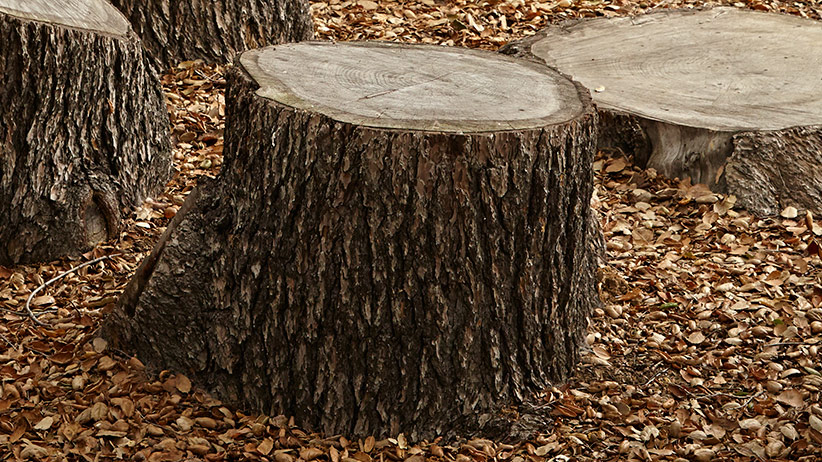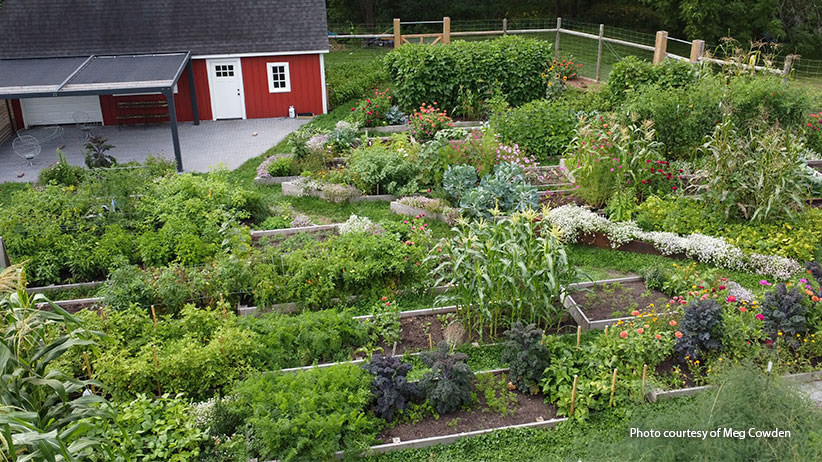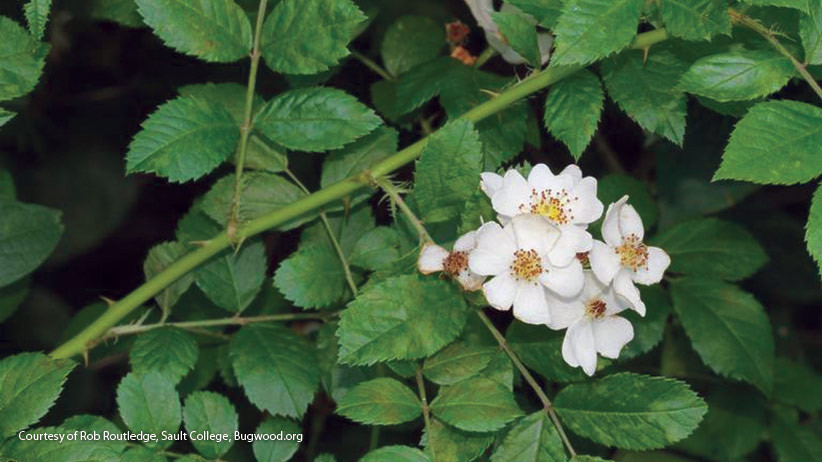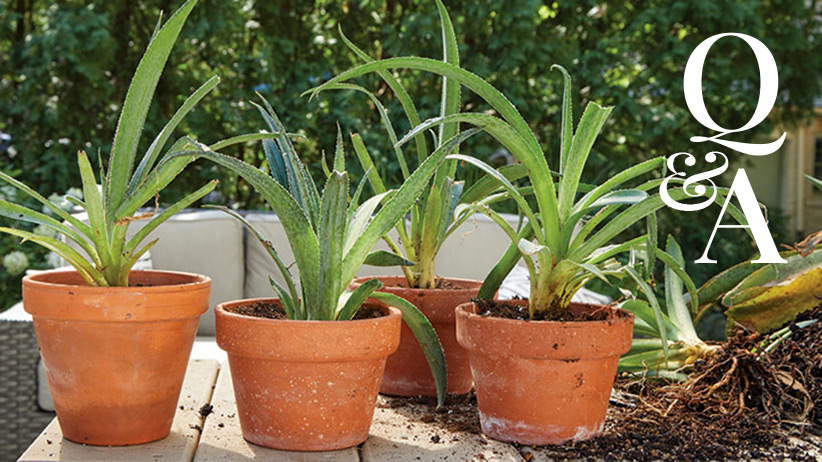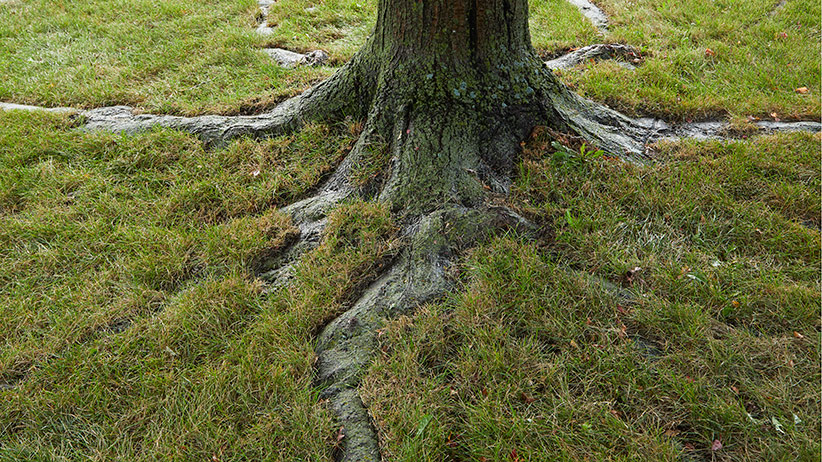
Tree roots can lead to problems
You might be surprised to know that a tree’s thick anchoring roots can grow one and a half to three times the width of its canopy. And many of the moisture- and nutrient-absorbing feeder roots are in the top 18 to 24 inches of soil. This extensive root system can lead to occasional problems in the garden. Let’s take a look at three common issues.
1. Surface roots can be a hazard
Large roots that show aboveground beyond the normal root flare (the spot where roots begin to grow out of the trunk at soil level) are usually anchoring roots and can be tripping hazards. They can also be damaged by lawn mowers that shave off the exposed wood, leaving the tree vulnerable to insects or diseases and dulling your lawn mower blades.
Trees with shallow root systems, such as maples and white pines, may be more prone to this problem. Freeze/thaw cycles can push roots to the surface, but erosion on a slope or grade changes due to construction or landscaping can also expose roots.
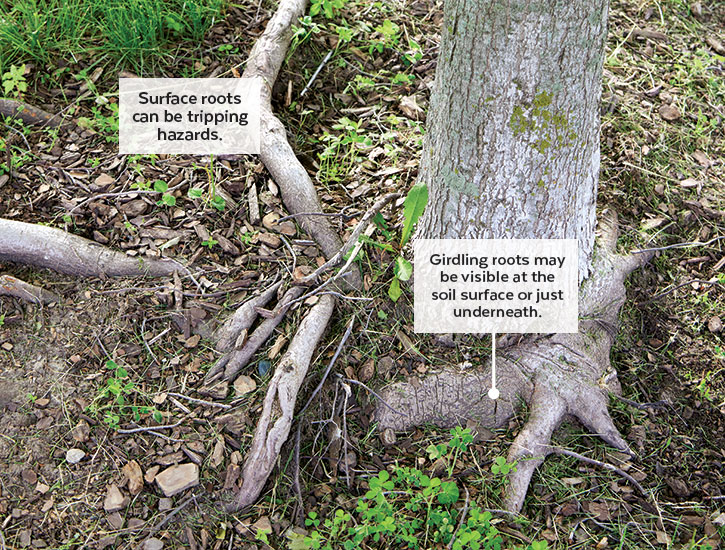
What to do with shallow tree roots
Your first impulse might be to cover the roots with a thick layer of soil, but this can smother small underground feeder roots, preventing them from absorbing moisture and oxygen. A better solution is to spread a 2-inch layer of mulch or compost, which is airier and drier than soil. This discourages new roots from growing there and repeating the problem.
Disguise tree roots with ground covers
Try planting shallow-rooted ground covers, such as epimedium, wild ginger and lilyturf to disguise surface roots. These plants are able to compete with the tree for resources, especially with a light layer of mulch to help hold moisture.
You Might Also Like
10 Best Shade Plants
Landscaping Plan: Planting Around Tree Roots
How to Root Prune Container-Grown Trees
2. Problems caused by girdling tree roots
If your tree is dropping leaves early, dying back, leaning or wobbly, roots may be girdling the trunk. Trees grown in pots can become rootbound and often begin circling in the container.
After being planted, roots may continue in a circular path, especially in hard, compacted soil where they can’t easily spread out beyond the planting hole. Then they tighten around the trunk and constrict the flow of water and nutrients. Also, if planted too deeply with the root flare covered by soil, a tree’s feeder roots will grow too close to the trunk and cause girdling.
How to prevent circling roots
When you plant a new tree, slide it out of the pot (or pull back the covering if it is balled-and-burlapped) and inspect the root system. Cut off circling roots close to the trunk, spreading remaining roots to grow beyond the planting hole and anchor the tree.
In the photo above, circling roots are becoming embedded in the trunk of a mature tree at the soil’s surface. This is a problem that a professional arborist should evaluate.
You Might Also Like
Create a Stunning Shade Garden
Garden Gate Video: Creating a Spiral Topiary
How to Plant a Tree in 4 Easy Steps
3. Tree roots can cause obstructions
Like the one in the photo below, most tree roots grow in the path of least resistance to avoid an obstacle, rarely causing a problem. But they will take advantage of construction flaws and cause damage by invading water pipes, cracking foundations and buckling driveways and sidewalks.

Tree roots can make existing problems worse
For instance, if a water pipe is already cracked, tree roots will easily grow into that space, seeking the moisture within (and extra nutrients if it’s a sewer line) and eventually clog up the pipe. Similarly, tree roots will only break into a foundation that is already damaged.
Pavement and sidewalks pose a different problem, as roots will seek moisture that doesn’t evaporate under concrete as quickly as it does in bare ground. Then as anchoring roots grow and increase in diameter, they push up and buckle or crack the pavement. Feeder roots don’t typically grow large enough to cause these problems.
How to deal with problem roots
First, fix what’s broken. Roots may have to be pruned during this process. Cutting a large root off a mature tree is not advisable, and you should have a professional arborist do the job. Learn more in this article.
Once the underlying issue is corrected, prevention is key. Keep trees that love moisture, such as willow, aspen, elm and maple, away from water lines. Try to plant trees at least 20 feet (or 12 times the mature trunk diameter) away from foundations and at least 4 feet away from sidewalks and driveways.
Tree roots can be sneaky — always have a watchful eye to keep them out of trouble!









